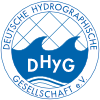- Details
- Written by: Super User
- Category: HN 108
- Hits: 4761
MARSAT-Workshop
Im Projekt MARSAT arbeiten fünf privatwirtschaftliche Unternehmen und eine Forschungseinrichtung eng zusammen, um mit Hilfe von Satellitendaten neue Dienste für die maritime Wirtschaft zu entwickeln. Dazu zählen etwa die Optimierung von Schiffsrouten, tagesaktuelle Eisdienste oder Seebodenkartierungen. Neben der Schifffahrt soll auch die Offshore-Industrie von den neuen Services profitieren, ebenso wie Notfall- und Bergungsdienste. Am 21. September 2017 fand in Hamburg ein erster User-Workshop des Projektes statt.
- Ausgabe: HN 108 Seite: 46
- DOI: 10.23784/HN108-08
- Autor/en: Peter Dugge
- Details
- Written by: Super User
- Category: HN 108
- Hits: 4750
Hydrographische Inhalte auf Stabkarten – Stabkarten zur Navigation im Seegebiet der Marshallinseln/Mikronesien im Pazifik
Insulaner der Marshallinseln/Mikronesien im Pazifik benutzten Gitterwerksignaturen auf Stabkarten als Orientierungshilfe zur Navigation. Exemplarisch werden zwei Stabkarten (Medos) mit Gitterwerksignaturen von charakteristischen Dünungswellen gezeigt. Knotenlinien oder okar werden durch Interferenzen von Dünungswellenablenkungen von Atollen und Inseln erzeugt. Durch die Approximation eines Atolls oder einer Insel in Form eines Wellenbrechers werden Interferenzmuster mathematisch durch die Theorie der Beugung/Diffraktion erklärt. Diese Charakteristiken von Wasserwellen können im 19. Jahrhundert als eine der ersten historischen Untersuchungsobjekte der Hydrographie betrachtet werden.
Marshallinseln | Stabkarte | Navigation | Diffraktion | Interferenz
- Ausgabe: HN 108 Seite: 40–45
- DOI: 10.23784/HN108-07
- Autor/en: Ingo Hennings
- Details
- Written by: Super User
- Category: HN 108
- Hits: 4686
Sea state from high-resolution satellite-borne SAR imagery
The Sea Sate Processor (SSP) was developed for fully automatic processing of high-resolution Synthetic Aperture Radar (SAR) data from TerraSAR-X (TS-X) satellites and implemented into the processing chain for Near Real Time (NRT) services in the DLR ground station »Neustrelitz«. The NRT chain was organised and tested to provide the processed data to the German Meteorological Service (DWD) in order to validate the new coastal forecast model CWAM (Coastal WAve Model) in the German Bight of the North Sea with 900 metre horizontal resolution. The NRT test-runs, wherein the processed TS-X data were transferred to DWD and then incorporated into forecast products reach the best performance about 10 minutes for delivery of processed TS-X data to DWD server after scene acquisition.
Remote sensing | Oceanography | Coastal processes | Sea state | NRT | Forecast
- Ausgabe: HN 108 Seite: 34–38
- DOI: 10.23784/HN108-06
- Autor/en: Andrey Pleskachevsky, Stefan Wiehle, Sven Jacobsen, Claus Gebhardt, Björn Tings, Egbert Schwarz, Detmar Krause, Thomas Bruns, Jens Kieser
- Details
- Written by: Super User
- Category: HN 108
- Hits: 4636
Satellite-derived bathymetry – An effective surveying tool for shallow-water bathymetry mapping
Unlike other survey methods satellite-derived bathymetry (SDB) offers a remote mapping of shallow water zones. It is based on the concept of using the reflectance intensity of different wavelengths (colours) of the sunlight which is recorded by the satellite sensor. This information in combination with relevant databases and physical models determines the shallow water depth down to the light penetration depth. In the last decade, there has been an increasing interest of SDB methods and derived data. Various exercises have been done by academia and industry to validate and evaluate SDB data sets (REF). This awareness is based on two major developments: the recent availability of very high-resolution satellite data mapping the seafloor in sufficient detail and the design of robust and standardised algorithms and workflows. The demand of accessing bathymetric data for the shallow water zone, costs and the ability to map with ship and airborne sensors have also led to high interest in this effective surveying tool. The zone is still poorly surveyed for various locations worldwide (IHO 2016a). This article provides an overview of all aspects of SDB surveys from satellite sources, SDB workflows and methods to use cases.
Satellite-derived bathymetry – SDB | Remote sensing | Earth observation | Mapping depth
- Ausgabe: HN 108 Seite: 30–33
- DOI: 10.23784/HN108-05
- Autor/en: Knut Hartmann, Thomas Heege, Magnus Wettle, Marcus Bindel
- Details
- Written by: Super User
- Category: HN 108
- Hits: 4849
The altimetry processing chain – Bathymetry for BASE-platform
The present article describes some of the most relevant features of the designed calculation chain for bathymetric products from satellite altimetry method that has been integrated into the BASE-platform service. We estimate bathymetry based on up-to-date data from Cryosat2 where the new generation of altimetry radar (SAR mode) is processed in-house by using analytical solutions for the retracking model. A new method is used for the de-noising of residual altimetry profiles. The solutions are calibrated with in-situ soundings to consider seafloor density variations.
BASE-platform | Altimetry | Bathymetry | Satellite altimeter | Gravity anomaly | Geoid
- Ausgabe: HN 108 Seite: 24–28
- DOI: 10.23784/HN108-04
- Autor/en: Pau Gallés, Maite Muñoz, Bernat Martínez, Eduard Makhoul, María José Escorihuela, Mònica Roca


